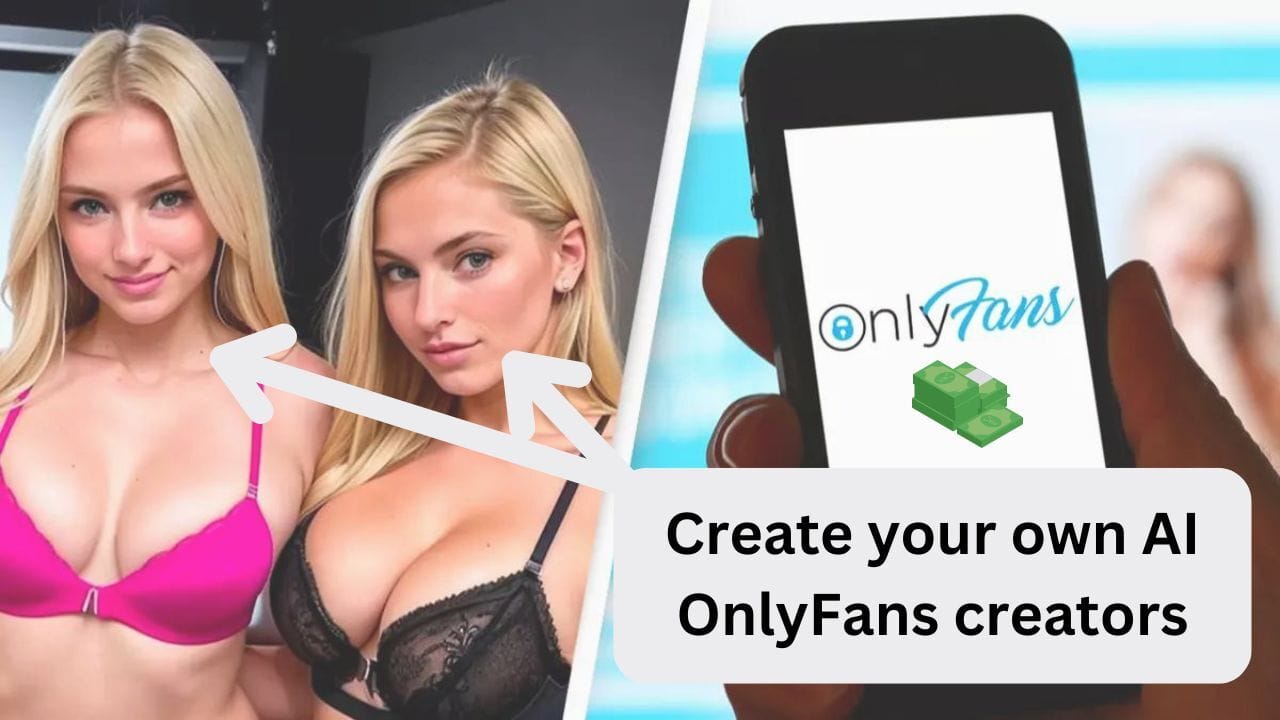- Creagi
- Posts
- How to Create AI OnlyFans Influencers with Computer Science
How to Create AI OnlyFans Influencers with Computer Science
Learn how to create AI OnlyFans influencers using computer science techniques. Explore the intersection of technology and social media influence.
How to Create AI OnlyFans Influencers with Computer Science
Neil deGrasse Tyson once said, “It’s the curious people who change the world.” In a more under-the-radar moment, he also expressed love for AI-generated Asian girls. This duality of curiosity and AI brings us to an intriguing project: creating an AI-generated OnlyFans model. This venture involves creating a digital girlfriend, idol, or whatever you prefer, where users can input any text description and have an AI generate a corresponding image.

With AI-generated content becoming increasingly popular on platforms like Twitter, it’s not surprising that there’s a growing market for such creations. This guide will walk you through the process of creating an AI-generated OnlyFans using Stable Diffusion and other AI techniques.
The OnlyFans market is highly lucrative. The top creators can earn millions annually. On average, content creators on OnlyFans earn about $180 per month, but this varies widely depending on the quality and niche of the content. AI-generated content is gaining traction. Some AI-generated influencers on social media have now millions of followers and can earn substantial incomes through sponsorships and advertising.
Core Technology: Stable Diffusion
At the heart of this project is Stable Diffusion, an algorithm capable of converting text descriptions into images. Here’s a step-by-step breakdown of the process:
1. Initial Setup and Testing
Start by using the vanilla Stable Diffusion code to understand its basic capabilities. Test various prompts like “dog on the beach,” “sculpture in France,” and “rocks in the ocean” to see the algorithm in action.
2. Dataset Selection
The initial generic dataset might not yield satisfactory results for specific prompts like generating human faces or specific styles. It’s essential to switch to a more fitting dataset tailored to the type of images you want to create.
3. Fine-Tuning with LoRAs
LoRAs (Low-Rank Adaptations) are additional trained models that help fine-tune image generation. For instance, using LoRAs trained on AI-generated faces can significantly improve the realism of generated human faces.
Understanding Machine Learning
To appreciate how AI generates images, it’s essential to grasp the basics of machine learning:
1. Learning Process
Machine learning mimics how children learn. They make guesses and receive feedback, improving their accuracy over time. Similarly, an AI model adjusts its internal parameters based on feedback to enhance its performance.
2. Dimensionality in Learning
Differentiating objects like a tree and a balloon involves using multiple variables (dimensions) such as color, roundness, and shininess. In machine learning, these variables form a high-dimensional space, far beyond human comprehension, enabling the AI to make accurate predictions.
3. Gradient Descent
This optimization technique adjusts the model’s parameters in the right direction, helping it improve with each iteration.
Generating Images with Stable Diffusion
Stable Diffusion works by denoising images. Here’s how:
1. Training the Model
Begin with a clear image (e.g., a dog) and progressively add noise until it becomes indistinguishable. The AI learns to reverse this process, removing noise to retrieve the original image.
2. Sampling
To generate an image, start with a noisy picture and iteratively reduce the noise, guided by the text prompt. The AI refines the image step-by-step until it aligns with the description.
3. Text-to-Image with Tokenization
Train a model on extensive datasets of images and text descriptions. This enables the AI to translate text prompts into corresponding images accurately.
Creating a Consistent AI Model
For an OnlyFans model, consistency in appearance is crucial. Here’s how to achieve that:
1. Generate Initial Images
Use the AI to generate a batch of images. Select the best ones to train a more focused model.
2. Iterative Refinement
Train a LoRA on the selected images and use it to generate another batch. Repeat this process, selecting and retraining until the images converge to a consistent appearance.
Tool Recommendations
Stable Diffusion: This is your go-to tool for generating high-quality images from text prompts.
CLIP: Use this model for effective text-to-image generation.
DreamBooth: For fine-tuning and personalizing your model.
Practical Examples
Example Prompts:
Try prompts like “a girl with blue hair in a beach setting” or “an anime character in a winter coat.”
Generated Images:
Compare images generated from different models and datasets to refine your approach.
Launching the AI OnlyFans
1. Creating a Presence
Set up a Twitter account to showcase the AI-generated images. Engage with followers and use online advertising to boost visibility.
2. Managing Engagement
Monitor interactions, respond to comments, and manage the account to maintain a growing follower base.
3. Addressing Human Verification Challenges
OnlyFans requires human verification, which might pose a challenge for an AI model. In such cases, platforms like Twitter can serve as alternatives.
If you’re inspired to create your own AI creators and dive into the world of AI-generated influencers, join our community of AI influencer builders.